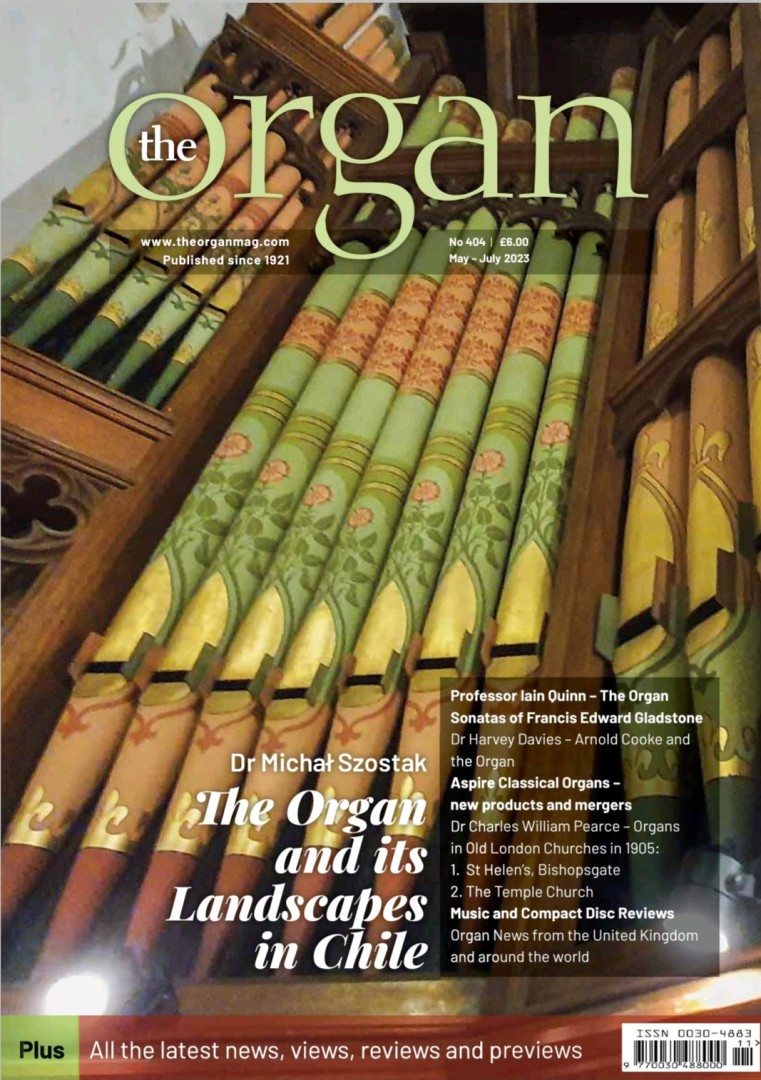NEW ARTICLE (ENG): "Organ landscapes in Chile”, in: "The Organ”, No 404, May-July 2023
Dodano 26.5.2023

Szostak Michał, "Organ landscapes in Chile", in: "The Organ”, No 404, May-July 2023, Musical Opinion Ltd, London, ISSN 0030-4883, pp. 4-17.
Introduction
The following report on musical experiences and impressions gained during my recital tour in South and Latin Americas in June of 2022 refers to Chile; after Argentina’s[1] and Panama’s[2] organs secrets, it is time to visit the most western-located country in South America.
The article describes the historical background of Chile, its organ culture in general and also four instruments in detail: two of them (St Ignacio, Santiago and Saint Paul´s Anglican Church, Valparaíso), where I played recitals, the third one in Cathedral of Santiago and the fourth one in the Franciscans’ church Iglesia del Colegio de los Sagrados Corazones in Valparaíso were chosen due to its historical value.
The Republic of Chile is located in the western part of South America, being the southernmost country in the planet and closest to Antarctica, stretching along a thin strip of land between the Andes Mountains and the Pacific Ocean. With an area of 291,930 square miles and a population of around 17.5 million, it shares borders with Peru, Bolivia, Argentina, and the Drake Passage. Chile also controls some Pacific islands, and claims about 480,000 square miles of Antarctica as the Chilean Antarctic Territory. Chile’s capital and largest city is Santiago, and the national language is Spanish.
Spain conquered and colonised the region in the mid-16th century, substituting Inca rule, but failed to conquer the independent Mapuche people who inhabited south-central Chile. In 1818, after announcing independence from Spain, Chile appeared as a relatively steady authoritarian republic in the 1830s. During the 19th century, Chile underwent significant economic and territorial growth, ending Mapuche resistance in the 1880s and acquiring its current northern territory in the War of the Pacific (1879-1883) by defeating Peru and Bolivia. From the 20th century until the 1970s, Chile underwent a democratisation process and experienced rapid population growth and urbanisation while relying increasingly on exports from copper mining to support its economy. However, during the 1960s and 1970s, the country was marked by severe political polarisation and turmoil. It was followed by a military dictatorship under Pinochet, which resulted in at least 3,000 deaths. The regime ended in 1990, and was succeeded by a centre-left coalition, which ruled until 2010. Till now, the country tries to organise its political scene and suffers from many turmoils.









